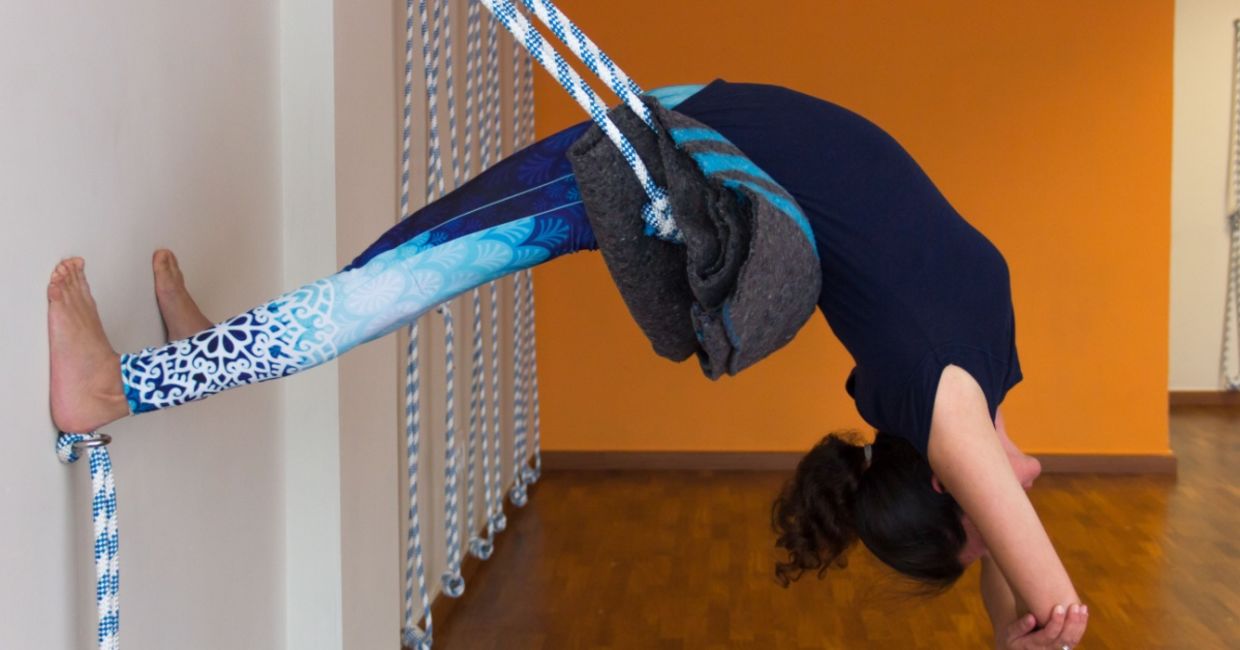
(Josu Ozkaritz / Shutterstock.com)
Iyengar yoga offers a transformative new approach to yoga, blending traditional methods with modern precision. It combines classical hatha yoga’s slow, deliberate movements with precise focus, according to the Yoga Journal.
This approach ensures a safe, structured progression through poses, ideal for beginners and also beneficial for more advanced students. Discover what makes Iyengar yoga so unique and how to incorporate the practice into your life.
What is Iyengar Yoga?
You’ve probably heard of some popular styles of yoga, like invigorating hot yoga or flowing vinyasa. But, what about Iyengar yoga? This relatively new 20th century practice adds a modern twist to traditional yoga sequences.
The Indian yoga teacher and author, B.K.S. Iyengar (1918—2014) first developed the Iyengar style, according to Ekhart Yoga. The practice combines classical hatha yoga traditions with modern precision. Hatha yoga has existed for thousands of years and combines slow movement with breathing techniques.
Iyengar took this ancient practice a step further by focusing on precise aspects like the sequence of poses, the length of time spent in each pose, and the body’s alignment. He also includes props to get more out of each movement and ease students into more challenging positions.
Iyengar yoga emphasizes balance between body, mind, and breath while fostering awareness. Rooted in Iyengar’s journey to improve his health through yoga, the method integrates his deep anatomical knowledge and the innovative use of props. Beyond physical benefits like improved posture, stress relief, and energy boosts, it nurtures focus, mindfulness, and present moment awareness.
What Makes Iyengar Yoga Unique?
Iyengar yoga, according to the Yoga USC blog, focuses on precise movements with careful attention to alignment, sequencing, and timing. In his book Light on Yoga published in 1966, Iyengar details the proper way to execute each pose. He clearly lays out instructions on the body’s alignment, how long to sustain each pose, and the correct way to come out of it. This level of precision helps build mindfulness, focus, and mental clarity.
Iyengar yoga recognizes that everyone has different physical and mental abilities. According to the YogaAnytime blog, props like blocks, straps, and chairs make the practice safe, inclusive, and therapeutic for students of all levels to fully experience the postures while respecting their unique bodies.
Props help tailor poses to individual needs, recognizing that everyone’s physical and mental abilities differ. Props provide safe modifications for beginners or those with limited mobility. They also help more experienced yogis challenge themselves. Props help train for more difficult poses and allow you to hold poses longer to build strength, flexibility, and concentration. For example, a strap in the back-bending palm tree pose helps activate inner arms, while a chair in side plank pose encourages torso alignment..
More than a physical discipline, Iyengar yoga nurtures mindfulness, focus, and connection to the present. Its thoughtful methodology invites practitioners into a deeply personal and reflective journey, transforming yoga into a union of self-awareness and precision. Whether you’re starting out or deepening your practice, Iyengar yoga offers a unique gateway to the art and science of yoga.
YOU MIGHT ALSO LIKE:
5 Yoga Poses to Celebrate Abundance in the New Year
Hatha Yoga Helps Improve Physical and Mental Wellbeing
Yoga for All Ages: Tailoring Your Practice to Different Life Stages






